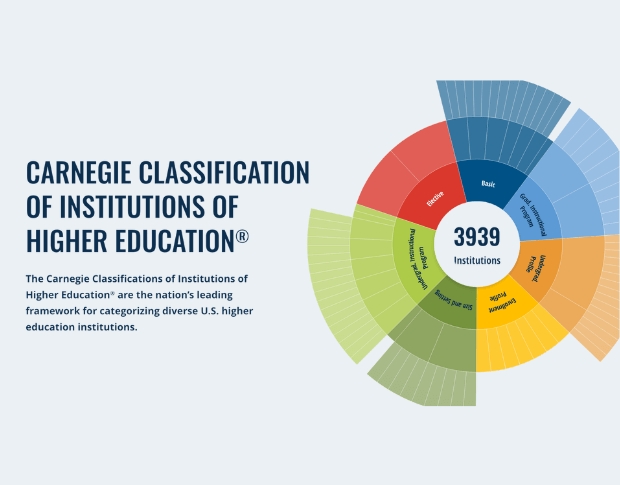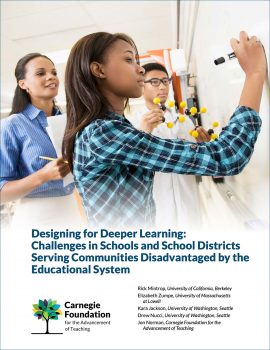Designing for Deeper Learning: Challenges in Schools and School Districts Serving Communities Disadvantaged by the Educational System
Executive Summary
Designing for and implementing deeper learning across classrooms and schools that serve communities disadvantaged by the U.S. educational system is challenging. This paper illuminates this challenge by asking the question: What would designers of interventions at the classroom, school, and district levels have to take into consideration when they want to powerfully set their organizations on a developmental path towards deeper learning?
The thinking put forth in this paper is closely informed by the experiences of a number of change projects aimed at furthering deeper learning districtwide. The projects were funded by the William & Flora Hewlett Foundation and organized as research-practice partnerships (RPPs) in which improvement teams worked together to design interventions or change activities over a period of three to four years. The approaches taken by the projects differed widely. The purpose of this paper is to aid the thinking of deeper learning designers for future undertakings by putting forth a theory of improvement informed by prior research, offering a matrix of concrete design tasks, and exploring trade-offs of pursuing different approaches.
Deeper learning in the instructional core is characterized by students productively struggling with complex ideas that are important to them given their lived experiences. Students explore these ideas with voice, inquisitiveness, imaginativeness, and collaboration. Therefore, deeper learning in the interaction between students and teachers is the hoped-for outcome of the designed and implemented intervention.
A Theory of Improvement
Realizing deeper learning in classrooms, and with a clear and consistent focus on attenuating inequities, requires substantial shifts in the work of teaching. It is therefore imperative that any deeper learning initiative provide sustained, high-quality professional learning opportunities for teachers.
However, the influence of professional learning experiences on teachers’ daily practices are heavily shaped by the broader school and district context in which they work. This means that, under current circumstances in typical districts, there is a need for sustained professional learning opportunities for other role groups (e.g., principals, district leaders) and attention to ensuring that the school and district organizational routines and cultures support deeper learning.
In mapping the territory of designing for deeper learning, there are three sites of development that a design effort for ambitious instructional improvement must take into consideration: (1) teacher professional development, (2) school organizational development, and (3) district organizational development. Furthermore, designers need to be enabled “to see the system” across these sites of development.
Across these sites, interventions revolve around the learning dimensions of motivation and commitment, conceptual understanding, instructional materials, asset-based orientations and practices, and forms of inquiry in professional community. Important dimensions of school and district organizational development are mobilization of instructional leadership, programmatic focus and coherence, and systems and routines for iterative improvement.
Design Tasks and Trade-Offs
A matrix of design tasks for each learning dimension across the three sites of development makes designing more concrete. The system becomes actionable, but given the systemic complexity of the design challenge, potential activities are numerous.
It is rare that any given deeper learning initiative could cover the full spectrum of design tasks that the theory of improvement suggests. Given incontrovertible limitations in local capacity and collective energy, designing in the local context is the art of selecting a finite but well-chosen number of activities that unleash the drive to change in the desired direction. The design connects local needs assessment and analysis of locally germane obstacles and assets with powerful drivers of change, given an organization’s prevailing knowledge, sentiments, and emotions.
During this process, designers face a series of design decision points: How many sites of development or learning dimensions are possible and useful to tackle and with whom? Can all relevant sites of development will be tackled at once, or would local needs or available resources suggest it is most impactful to concentrate on certain ones? When making selections, designers assume that a certain degree of reasonable change will result if addressing at least some of the design tasks, perhaps sequenced over a given period of time.
By analyzing their chosen set of activities for a given period of time in reference to the full spectrum of multi-level design tasks, designers can realistically assess what aspects of the deeper learning challenge are still unaddressed, what outcome are realistic to expect, and what elements should be phased in over time.






